
12 minute read
FILMS ARE LIKE FOUR DIMENSIONAL PUZZLES
Anna Valentiny and Jérôme Becker in an interview with the Luxembourgish filmmaker and author Jeff Desom
Advertisement
Jeff Desom is a writer, film director and visual effects artist. Combining live-action, found footage and digital effects, his work has been selected and awarded at a number of festivals around the world. He works between Luxembourg and Los Angeles.
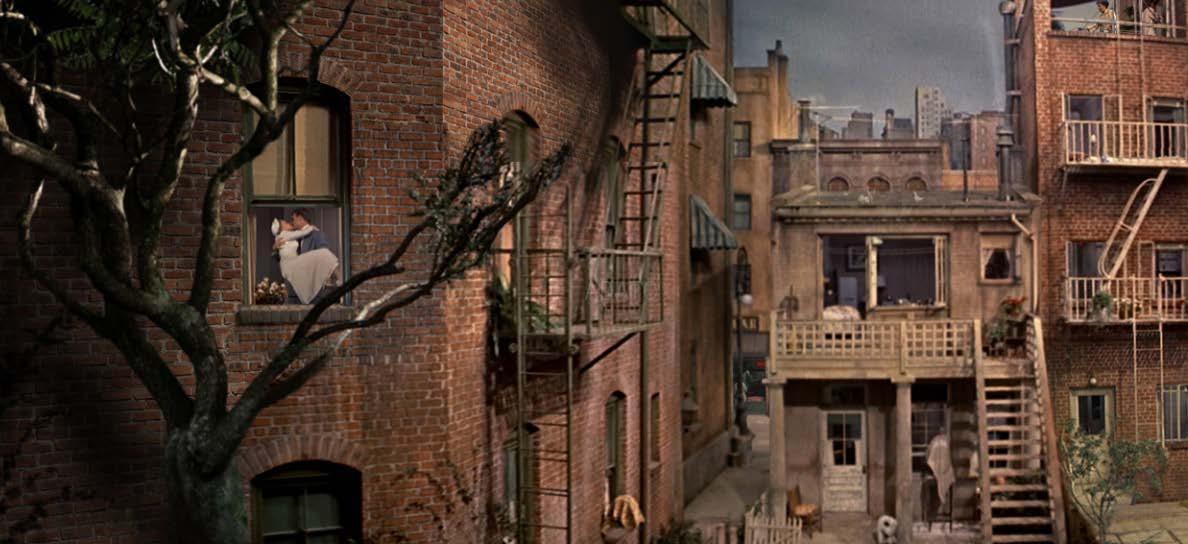
Rear Window Timelapse, 2012

Rear Window Timelapse, 2012
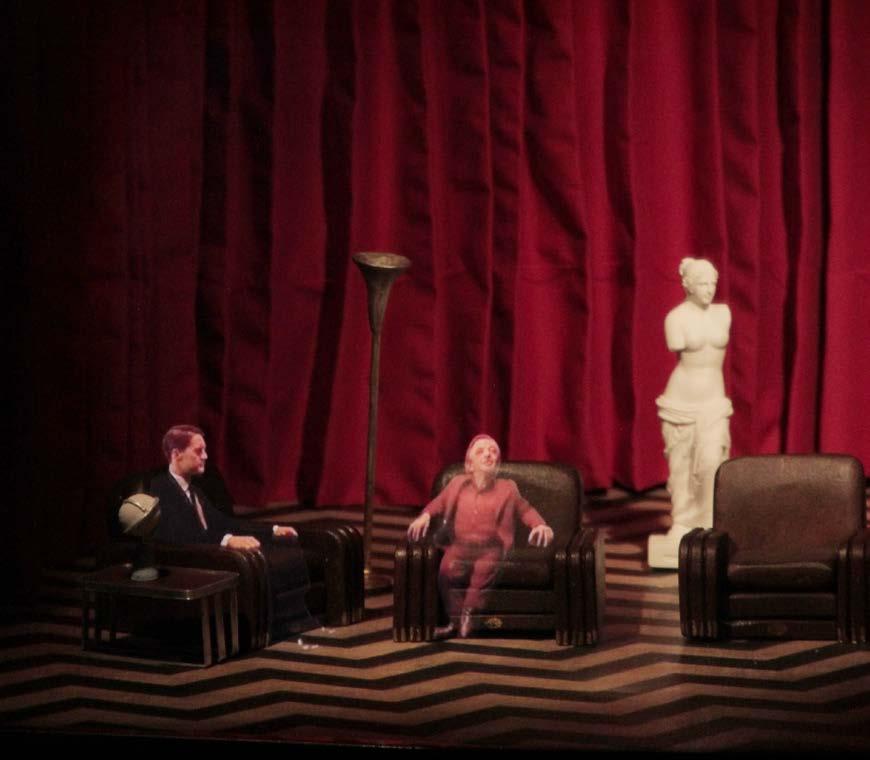
Holorama: An Optical Theatre, 2015
Adato In architecture, design techniques have in recent years fundamentally changed with the introduction of 3D software from film and animation. The theme of this Adato, however, is also based on an interest in film that is shared in general on the architecture scene. Do you as a film maker keep up with what’s happening in contemporary architecture?
Jeff There is definitely a strong feedback between the two art forms. From my point of view as a filmmaker, architecture can serve a few purposes: it can be the extension of a character’s inner state. It can be an arena that physically pins a set of characters up against each other. Or it can be a purely atmospheric presence. Technically speaking it is the stage and as such it plays an integral part in how you block a scene. When it comes to contemporary architecture I would have a hard time naming a particular style or movement. But I do take notice of it when I see it. Especially in films and more specifically the science fiction genre. Of any genre, sci-fi has the most vivid dialogue with contemporary architecture. I would be interested to know in how far films that depict the future are influencing the aesthetics of up and coming architects. A lot these films reflect the Zeitgeist and happen to be very cold and dystopian. Sometimes when I drive past a newly constructed house, I try to imagine it with wear and tear a few years down the line. In some of those buildings you can definitely see a hint of dystopia. Especially in the range of affordable housing, I’m sometimes shocked at how beauty has been sacrificed over functionality. It shouldn’t be a luxury. We need beauty around us, it is inherent to our well-being. If only there were more films like Spike Jonze’s Her. It’s a rare display of future living spaces that feel very warm and optimistic.
Adato We can observe an actually very architectural approach in your Rear Window Time Lapse (2012): a reconstruction of the always fragmentarily rendered background in Hitchcock’s film. You collaged the windows of an a priori chronologically developed narrative into a panorama of swarming simultaneous stages, you made a totality out of parts.

Holorama: An Optical Theatre, 2015

Holorama: An Optical Theatre, 2015

Holorama: An Optical Theatre, 2015
Jeff Films are like four dimensional puzzles that we put together in our heads. However, the nature of time and space makes it impossible for us to ever see all the pieces at once. The bigger picture only exists in your mind and even then, it is subject to flaws in your memory. As I was revisiting Rear Window, this incompleteness became an itch I couldn’t scratch. And so, I set out to reconstruct a whole from the fragments that Hitchcock had left us. I like to compare it to a form of film restoration or even archaeology. You carefully dig up the pieces of the puzzle and then try to reassemble them in a way that seems closest to the original state. On a purely spatial level, Hitchcock was extreme in that his camera never changes position when he looks out into the courtyard. The camera pans and tilts, but it does so from the exact same spot. This eliminates any parallax and makes it possible to reconstruct the space as if it had been scanned. A process not very different from the way you would shoot a panorama on your phone.
Adato What role does the analogue model play in your work? In the installation Holorama (2016) or the music video Mr. Tillman for Father John Misty (2018), the function of the model goes beyond that of a purely ancillary and representational medium and becomes part of the scenario.
Jeff My fascination with miniatures goes way back to a time when I would play with Märklin trains and build those little model houses. I could see myself drive these
trains and live inside those houses. Come to think of it, most toys are mini-versions of daily objects from the world of grown-ups. From a young age, we are conditioned to use our imagination and pretend that these placeholders are as fully functional as the thing they represent. It’s not surprising that we start to project our dreams and desires into these objects. The same self-projection mechanism kicks in when we watch a film. To me miniatures and films are very similar in that regard. It only made sense to combine the two and play with that flaw in our perception.
Adato What dos the relation between analogue and digital mean for your work?
Jeff It’s a question that looms over many of the decisions we as filmmakers face today. Do you shoot film or digital? Is this a practical effect or will it be a computer-generated image? Every project is different and requires tailored solutions. In an ideal world, you make a choice based on certain aesthetics that you want. But when it comes down to it, time and budget tend to make those decisions for you. In my experience, the digital wins that battle ninety percent of the time, but when I get to work with installations it’s a different story. There’s more room for experimentation. And since my roots go back to a time before digital, I always look for ideas where both worlds, the digital and the analogue, complement each other. With new technologies emerging every day, it’s easy to forget the ingenuity that existed many years before computers were able to create images.
Adato A theme that has kept recurring in your works right from the beginning is your treatment of different film tricks. Where does this fascination for torpedoing real conditions come from and how have you acquired the necessary skills?
Jeff When I became serious about filmmaking, DVDs started to replace VHS as a new way of experiencing movies at home. Not only could you skip to any point in the timeline, but there were also these wonderful supplements like making-offs, deleted scenes or director’s commentaries. They really opened my eyes to a whole new world I didn’t know was out there. It was like a magician showing you how the trick
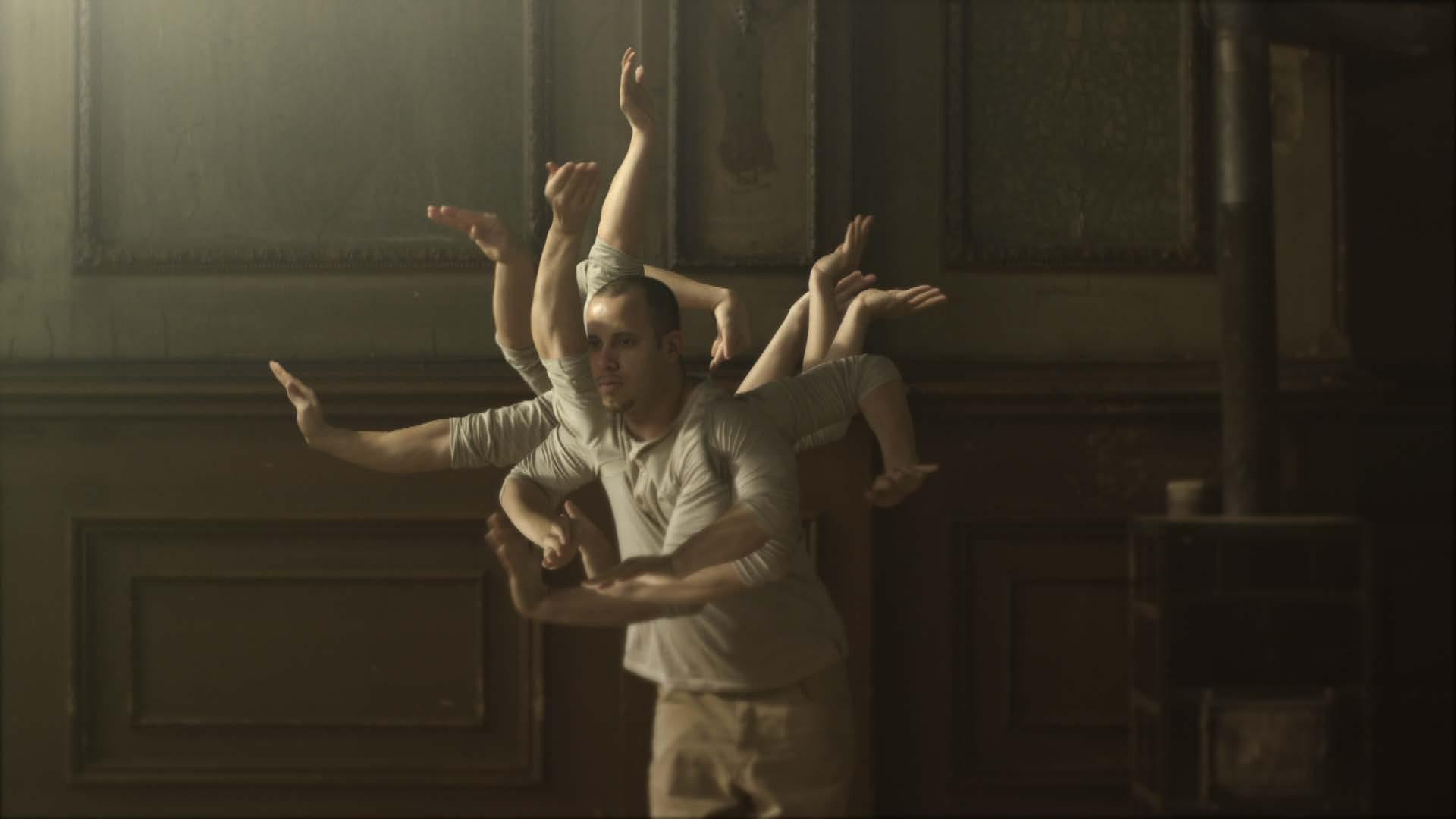
Video Still, Jeff Desom for Hauschka. 2012. Radar.
Adato The visual effects you used in Mr. Tilltational technique which aims to pretend the reality of the fictive. From that moment on, in which the scenery floats like a little island in a vast nothing, the X ON A MAP (2009) A short film about eggs and maps. It's not easy being a great discoverer when everything has been mapped out. starring Sean Biggerstaff, Vicky Krieps & Jean-François Wolff as Christopher Columbus written & directed by Jeff Desom produced by Bernard Michaux, Lucil s.àr.l. cinematographer Jean-Louis Schuller production designer Christina Schaffer editor Amine Jaber music André Mergenthaler

X ON A MAP (2009)
man are not simply part of an augmented represenFilm Still, Jeff Desom. 2009. X on a Map. illusion is explicitly treated as illusion. Can we read that as a manifesto for the artificial element in film?
Jeff Indeed Mr. Tillman is very explicit about its artificiality. It riffs on a very common motive: the frame within a frame. In fact, it is something that you see a lot of in Rear Window and that has probably influenced me. It poses the question where reality ends and where the illusion begins. Is the theatre screen that border? Or is it your eye’s retina. Or is the border even further within your mind. Film is a safe place to teeter on the edge of those questions. It’s the mystery that draws us in as we continue to seek out fictional worlds and accept them as alternate realities even though their artificiality is proven knowledge.
Adato How do you see the contrary positions, such as in the Dogma 95 movement, that bans all tricks and special effects in order to counteract an increasing alienation from reality in the cinema?
Jeff Since its earliest beginnings cinema has tricked us into believing that a series of still images are moving. To say one makes films without the use of tricks is an illusion in itself. Dogma 95 brought forth some terrific films but as a movement it always seemed like more of a stunt to me. They proclaimed rules to break rules, we call that trolling today. I do understand the frustration that a movement like Dogma 95 was born out of. In fact, I’m not seeing enough counter-movements in response to the current state of an industry dominated by blockbusters. However, I don’t think that the use of effects is indicative of falseness. If a film manages to elicit something that rings true to us, does it matter what tools were used in order to do bring forth that sense of veracity? Look at 2001 A Space Odyssey. Kubrick’s masterpiece is widely considered one of the greatest achievements in cinematic history. From sets to costumes, almost everything you see on screen was manufactured in one way or another. The film also pioneered a great number of visual effects. And yet, to this day, it deeply resonates with the human experience.
Adato With the development of ever higher-performance software packages for digital image synthesis, the entire potential in film has long been exploded. Everything imaginable seems to be representable. How do you cope with this situation of potential limitlessness?
Jeff It is true that processors have become more powerful but at the same time resolutions for deliverables have grown exponentially. I still feel like I waste the same amount of time waiting for the computer to render as I did ten years ago. Truly limitless resources still heavily rely on a generous budget and an army of CG artists. I can’t say that I have access to those kinds of means yet. Even if I could produce every image my mind conjures, I think the sheer mass of mediocre imagery in my head would deter any viewer. As storytellers, it is our job to filter out a lot of that junk before we have something half-way ok to show for. Limitations can be annoying but they help make choices and create a point of view that is unique to us.
Adato You are an author, film maker … do the projects you develop and realise on your own have priority, or those during which you are integrated into a team? At what point in the production process is know-how demanded, and how might we imagine an average working day of yours?
Jeff It really depends on the project and no two projects are the same. Sometimes I am the one to initiate a project from the ground up, other times I come on board after a script has already been written. In my day to day, I’m usually working on a few projects that are at varying stages of the process. I might pitch a music video while I’m in pre-production on a TV pilot and also give my notes on visual effects for a commercial in post. Production itself is a more irregular occurrence. On days when I’m out and about on a film set I have barely any time for other projects. Collaborating with a team is intense and requires my undivided attention. In that time, you come across a lot of very unique challenges and you have to constantly think on your feet to come up with solutions. The clock is ticking and you can quickly waste a lot of resources making a bad decision. But if everything works out more or less it’s a blissful experience.
Adato Your website includes after Music Videos, Short Films and Commercials the category Installations. What is left of film when the camera is left out?
Jeff Good question. The camera is the most obvious tool in a filmmaker’s kit. You can even recognise certain directors by the way they compose a shot or how they move the camera. It’s a well-known observation brought forth by the auteur theory. Part of the fun in my installation work is to strip away that sense of authorship and give some control back to the viewer. Hitchcock would probably turn in his grave if he saw what I did with Rear Window. Without a camera, the viewer’s role becomes a much more active one. By extension we also loose the cut, the least obvious but most quintessential property of film. What we are left with is something that has a lot more in common with virtual reality than film.
Adato In your work we’ve seen homages to Méliès, Kubrick and of course Hitchcock. Are there any contemporary authors, film makers or artists who inspire you or with who you’d like to work with in the future?
Jeff Currently, I find computer games to be the most exciting domain in the arts. I don’t play much myself but I keep a close eye on what game designers are creating. If the opportunity ever arose I would definitely consider a collaboration with an artist in this field.

Video Stills, Jeff Desom for Father John Misty. 2018. Mr. Tillman.

Video Stills, Jeff Desom for Father John Misty. 2018. Mr. Tillman.

Video Stills, Jeff Desom for Father John Misty. 2018. Mr. Tillman.
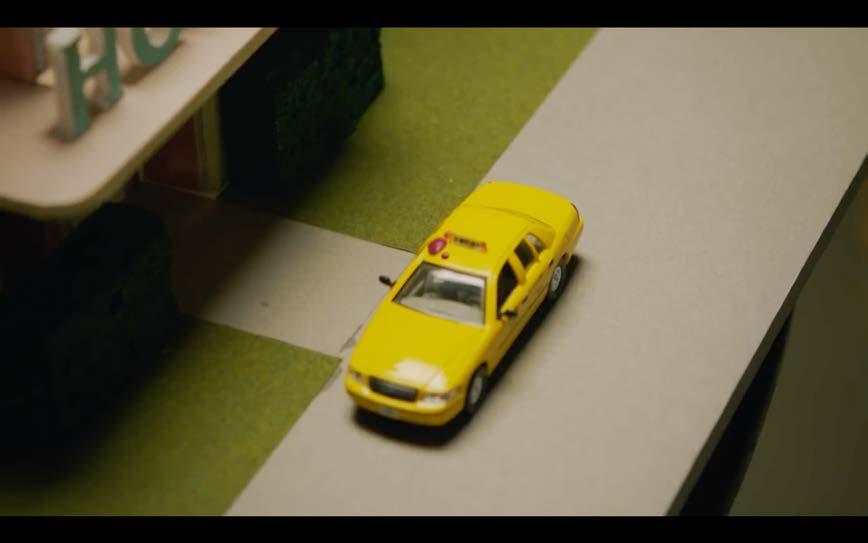
Video Stills, Jeff Desom for Father John Misty. 2018. Mr. Tillman.
WATCH THE VIDEO

Video Stills, Jeff Desom for Father John Misty. 2018. Mr. Tillman.
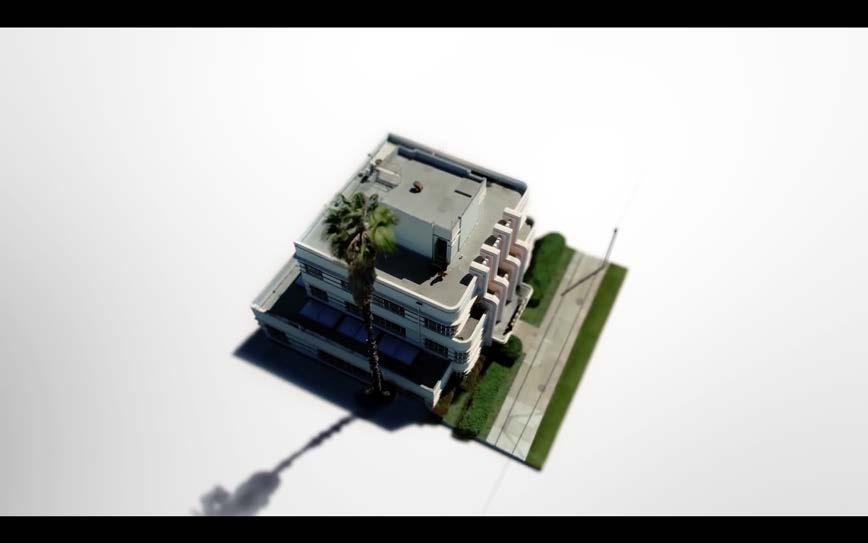
Video Stills, Jeff Desom for Father John Misty. 2018. Mr. Tillman.

